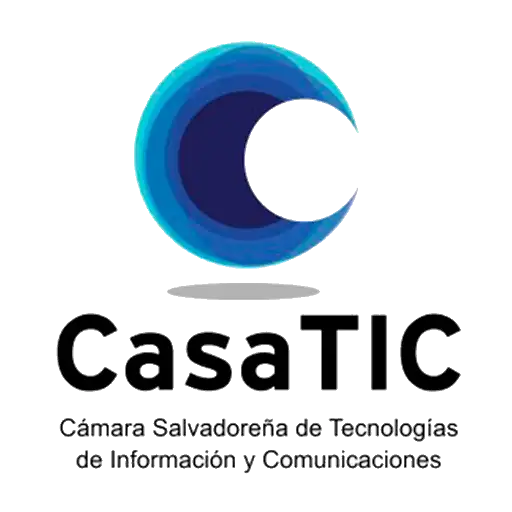-
Who we are
-
-
StrategyMission
To solve the challenges of organizations and communities through intelligent, secure, sustainable, and people-centered solutions, so they generate real value in their social and productive contexts.
VisionTo be the chosen company by organizations seeking to innovate with quality, purpose, and trust in the intelligent era.
Learn moreValues- Ethics and transparency
- Professionalism
- Respect
- Honesty
- Innovation
- Responsibility
- Effectiveness
- Integrity
- Customer orientation
- Punctuality
-
-
-
History
Sofis Solutions was born in 2005, in the city of Montevideo - Uruguay.
Since its inception, the main driver was and remains quality. This applies to processes, products, and relationships with the environment.The internationalization of the company It was one of the founding objectives. In the first stage, it expanded from Uruguay, and in the second stage, it opened offices in Latin American countries. Currently, it has offices in Montevideo, Panama, El Salvador and Ecuador.

-
-
-
Alliances








-
-
-
Certifications

CMMI-DEV-3
More informationNational Quality Award
More informationISO 9001:2015
Quality Management SystemISO 37001:2016
Anti-Bribery Management SystemISO 14001:2015
Environmental Management System
-
-
-
SustainabilityLearn more
Sofis Solutions integrates environmental, social, and governance (ESG) principles into its management and operations, driving sustainability through Digital Transformation. Its strategic approach prioritizes energy efficiency, digital inclusion, and transparency in digital governance, contributing to the responsible development of organizations.

-
-
-
What we do
-
-
IT projectsLearn moreAt our Software Factory, we specialize in providing software development solutions with a focus on excellence and sustainability.
-
-
-
Software qualityOur software quality services comprehensively address the aspects or dimensions of software quality, addressing this approach throughout the entire software development cycle.
- Manual and automated functional suitability testing
- Performance testing
- Software product quality
- Software quality consulting
Learn more
-
-
-
Staff AugmentationLearn moreWhat is IT Staff Augmentation? IT Staff Augmentation is a specialized technical staffing model that enables organizations to increase their agility and respond to the changing technological needs of the market.
-
-
-
ConsultancyIn the public sector, strategic decisions and projects with citizen-centered designs and excellence have the power to transform entire communities.Learn more
-
-
-
BIonA SuiteBIonA Suite is a comprehensive platform for the intelligent management of processes and services in public and private organizations. BIonA Suite facilitates smart transformation with a focus on public value and user experience. Learn more
-
-
-
Projects
-
-
Recent projects
 FOCAL Regional StudyFOCAL - El Salvador
FOCAL Regional StudyFOCAL - El Salvador Single Registry of Uruguayans AbroadMinistry of Foreign Affairs - Uruguay
Single Registry of Uruguayans AbroadMinistry of Foreign Affairs - Uruguay Population and Housing Census 2023National Institute of Statistics - Uruguay
Population and Housing Census 2023National Institute of Statistics - Uruguay
-
-
-
Digital Public InfrastructureWhat are Digital Public Platforms?ProjectsProducts
-
-
-
-
Mobile applicationsWe create hybrid, native, and PWA solutions for devices with Android and iOS operating systems.
Some of our projects:Digital Patrols, Ecuadorian Bovine Information System, Easy Budget UY, Digital Portfolio, SIGES Teachers App, SIGES Parents App.
Learn more
-
-
-
FOCAL regional studyThe purpose of the study was to carry out a regional analysis with the objective of identifying and evaluating the maturity level of the member countries of the Latin American Government Accounting Forum (FOCAL), currently composed of Argentina, Bolivia, Brazil, Chile, Colombia, Costa Rica, Ecuador, El Salvador, Guatemala, Honduras, Mexico, Nicaragua, Panama, Paraguay, Peru, Dominican Republic, Uruguay and Venezuela.Learn more

-
-
- AI
-
-
Artificial IntelligenceLearn moreAdvanced Artificial Intelligence (AI) and Big Data solutions that transform the way organizations make decisions and optimize their operations. We specialize in the development of intelligent autonomous agents and generative AI solutions using large language models (LLMs), both on local infrastructure and in the cloud.
-
- Press Room
-
-
Sustainable development
-
- Innovation
-
-
#GreenSofisMore information
Methodology
#GreenSofisSustainable Digital Transformation Conference
#GreenPath
-
-
-
AI For Everything
It is an initiative by Sofis Solutions, from the Intelligent Solutions Division, that promotes the adoption of artificial intelligence as a key driver of efficiency and effectiveness in the intelligent era.
It integrates both administrative and operational processes, promoting an organizational evolution where technology amplifies knowledge, optimizes decision-making, and generates value in a sustainable and inclusive way.
More information
-
- Contact us
- ES PT-PT
-

Interview: The Challenges of Generative AI in Software Engineering
As part of our technical interview series, we spoke with Santiago Atella, Director of the Intelligent Solutions Division at Sofis, who shares a deep insight into ‘The Challenges of Generative AI in Software Engineering.’ Drawing from his experience, Santiago analyzes the transformative impact of these technologies on software development and the challenges they pose for today’s engineering teams.
Introduction and Context
To begin, could you please introduce yourself and share your experience in artificial intelligence and its relation to generative software engineering?
My name is Santiago Atella and I currently serve simultaneously as Director of Sofis Solutions and Director of the Intelligent Solutions Division. I lead the strategic initiative “AI for Everything,” aimed at integrating Artificial Intelligence capabilities across all our development processes to significantly transform our working methodology and strengthen our value proposition.
I hold a degree in Computer Engineering and a Master's in Artificial Intelligence, which has provided me with the technical foundation to drive innovation in this field. Over my career at Sofis, I have led numerous AI projects that have generated significant impact—optimizing internal processes and delivering strategic value to our clients.
My vision is to democratize access to AI technologies by empowering teams and applying these solutions practically to address real business challenges and optimize products and services.
How would you define generative software engineering, and what role does AI play in this field?
Generative software engineering is defined as an innovative approach in software development that uses Artificial Intelligence systems to automate the creation of code, designs, and other components. Unlike traditional programming—where developers manually write every line of code—generative engineering enables humans to work at a more abstract level by describing what they need and ensuring software quality.
What are the main advantages that generative AI brings to software development compared to traditional methods?
The main advantage is that human teams can focus on tasks that truly deliver value to the client or solution—engaging in strategic and creative activities that maximize impact. Repetitive or easily automated tasks are handled by generative AI. This results in more robust products or services, higher quality, and greater value for clients and end users.
Practical Applications
What are the most notable current applications of generative AI in software engineering?
Currently, generative AI is employed in various areas of software engineering, such as:
- Code writing assistance
- Error detection and resolution
- Test generation and optimization
- Code refactoring and improvement
- Automatic documentation
- Support for software architecture and design
- Assistance in generating software requirements
How is your company implementing generative AI in software development?
At Sofis, we have developed the “AI for Everything” initiative, which integrates Large Language Models (LLMs) into the software development process. Our approach stands out for promoting sovereign AI—utilizing open-source models on our own infrastructure, ensuring full control over information security.
The system operates through a structured process that includes:
Requirement translation: we convert user-stated natural language needs into precise technical specifications.
Assisted architectural design: based on these specifications, we generate and define the most appropriate architecture.
Code generation: we automatically produce source code that implements the requirements.
What makes this approach unique is that the entire process is supervised by human experts, ensuring AI serves as an enabler—not a replacement. This human-machine collaboration enables rigorous control over functionality, aligns outcomes precisely with business needs, and leverages the efficiency of AI.
This methodology allows us to combine the best of both worlds: human creativity and critical judgment with the speed and consistency of generative AI.
Impact on Development Processes
How is generative AI transforming the software development lifecycle (from design through implementation and maintenance)?
Generative AI is profoundly transforming each phase of the software development lifecycle. In initiatives like Sofis’ “AI for Everything,” we see how LLMs can convert natural-language requirements directly into technical specifications, then translate them into source code and test cases. This significantly accelerates time to market and user acceptance testing. Under expert human leadership, this approach allows development teams to focus on refining and validating specifications rather than starting from scratch.
What impact does AI have on reducing development time and optimizing costs?
The economic impact and reduction in development time when implementing AI solutions are notable. By automating much of the work, time is redirected to activities that generate value, speeding up processes, improving quality significantly, and reducing rework. Once requirements are in a technical format, current AI models can generate code with few errors and a high level of efficiency.
Additionally, using sovereign solutions—such as in Sofis’ “AI for Everything” project—optimizes costs by reducing reliance on external services and minimizing security risks associated with sending sensitive information to third parties.
How is generative AI influencing test automation and error detection in software?
In the testing and quality control domain, AI is transforming how software is verified. From requirements, it is possible to generate test cases using models trained for that purpose and automate their execution.
One of the most significant advances is the shift from traditional peer code review to a hybrid human-machine model. AI models analyze developers’ code, identifying not only syntactic errors or security vulnerabilities but also optimization opportunities, suboptimal patterns, and deviations from best practices.
Challenges and Limitations
What are the main challenges in adopting generative AI in software engineering?
One common challenge is unrealistic expectations. Many organizations expect generative AI to solve all development issues immediately, when in reality it requires careful implementation and human expert guidance to generate significant benefits.
Another major challenge is the learning curve associated with effectively using these tools. Technical teams must learn to interact appropriately with these models to harness their full potential.
An additional critical challenge is integrating generative AI effectively within existing processes and workflows—especially for organizations like Sofis, assessed under CMMI Level 3 maturity model. This integration requires reconciling the innovative nature of AI tools with the defined, documented, and standardized processes demanded by CMMI.
A final highly significant challenge is AI explainability. This is an ever-evolving issue with various applicable techniques depending on the model (from interpreting attention matrices in transformers to post-hoc analysis using LIME/SHAP). Its importance varies significantly by use case: crucial in medical, financial, or legal environments where decisions directly impact lives; moderately important in recommendation systems or textual analysis; and less critical in creative or playful applications. This landscape is further complicated by emerging regulatory frameworks that demand greater transparency in high social impact AI systems.
How can bias and quality issues in AI-generated code be addressed?
To tackle bias and quality issues in AI-generated code, a comprehensive approach that combines human oversight with intelligent automation is necessary. Control checkpoints should be established over AI-generated artifacts, ensuring continuous monitoring of outputs and providing feedback to the AI to continuously improve its performance on assigned tasks.
What ethical and security risks must be considered when integrating generative AI into software development?
When integrating generative AI into software development, Sofis considers several fundamental ethical and security risks, including:
Data privacy is our primary concern—especially regarding proprietary code and sensitive data. Our "sovereign AI" strategy mitigates this risk by processing all information within our own infrastructure, avoiding exposure to external servers.
Transparency represents another significant challenge. Automatically generated code can result in difficult-to-understand and maintain 'black boxes.' To counter this, code generation must always be guided by humans to maintain control over what is produced.
Overreliance on AI can erode foundational programming skills within teams. It is crucial to maintain a balance where technology accelerates development but does not replace human judgment, thereby preserving the technical competencies of the team.
Closing and Final Reflections
What message would you offer to companies and software professionals who are still skeptical about generative AI?
To companies and professionals who remain skeptical about generative AI in software development, I would say: it’s not about replacing developers—it’s about empowering them. At Sofis, experience with “AI for Everything” shows that the real revolution happens when generative AI capabilities are combined with human critical judgment and creativity.
Those who resist this transformation will inevitably fall behind competitively. Delivery timelines shrink dramatically, quality improves, and teams can concentrate on real innovation rather than low‑value routine tasks.
My advice is to start with small projects, gradually integrate AI into workflows, invest in training, and establish clear principles for responsible use. The future of development isn’t about choosing between humans or AI—it’s about creating hybrid human‑machine teams where both amplify each other's strengths.

El pasado 20 de noviembre se llevó a cabo en la Sala Verdi la edición piloto de Burocracia Creativa UY 2025, la antesala local del Creative Bureaucrac......

Between October 14 and 16, 2025, the XI Forum of Government Accounting Offices of Latin America (FOCAL) was held in Santiago, Chile, a regional refere...

Within the framework of the United Nations Global Compact's 2024–2025 strategy, which proposes five transformative changes to accelerate business impa...












 Digital Signature
Digital Signature BionA Suite
BionA Suite Biona SIgn
Biona SIgn






















